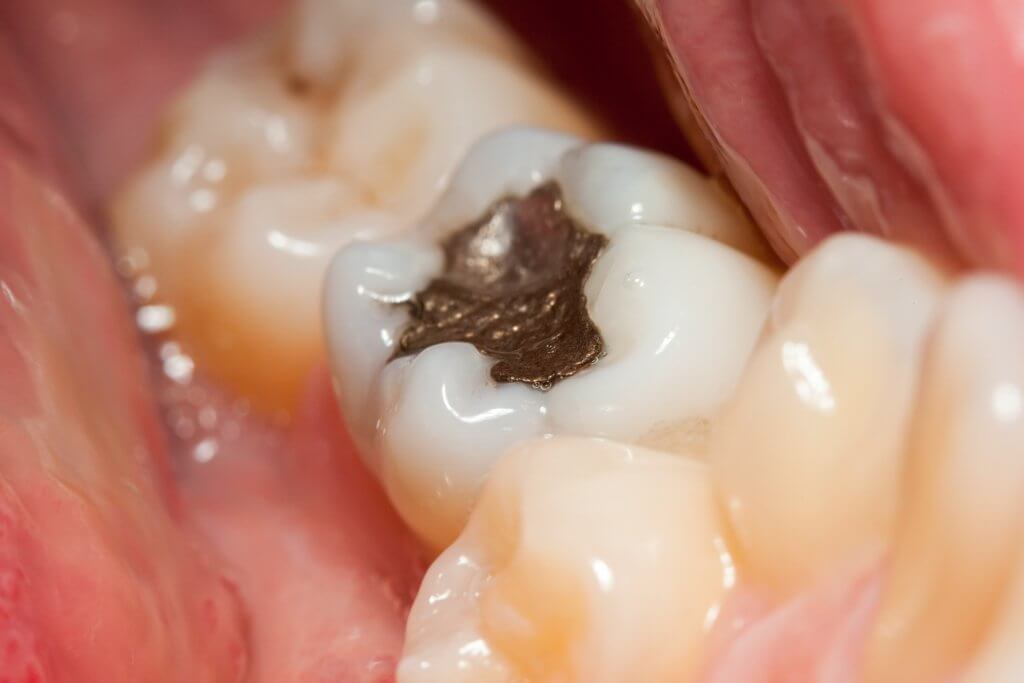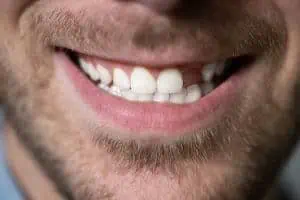Do you have teeth that are decayed or damaged, or simply didn’t develop correctly? If so, you might be a candidate for restorative dentistry. Restoration of teeth has to do with the diagnosis, treatment and prevention of oral disease and other problems. Whether you need a dental implant, dentures, dental crowns or even veneers, you might be a candidate for restorative dentistry. If you are interested in finding out more about restorative dentistry, keep reading to learn about:
- Missing teeth replacement
- Dental implant surgery
- Restorative dentistry’s role in general dentistry
- The difference between restorative and cosmetic dentistry
- The best options for your smile
What is restorative dentistry?
Restorative dentistry is any dental work needed to manage oral health problems and restore the function and esthetics of teeth. Restorative dentistry isn’t officially considered to be a dental specialty by the American Dental Association (ADA), however, doctors who study general dentistry can perforlm restorative dentistry by acquiring additional training and certification.
Prosthodontics is an area of dentistry that also deals mainly with restorative dentistry. Restorative dentistry procedures that fall under the umbrella of prosthodontics include fillings, veneers, dentures, dental implants and bridges.
Our dental dictionary contains more information related to restorative dentistry, if you’re interested in learning more.
Types of tooth restoration
Now that you know what exactly restorative dentistry is, let’s have a look at some of the most common restorative dentistry treatments in the US:
Dental implants
Dental implants are used to replace missing teeth. There are various types of dental implants including standard implants and All-on-4 implants. You can also get indifferent materials, like zirconia or titanium dental implants.
All-on-4 implants are a more affordable way to replace an entire arch or a full mouth of teeth than getting separate implants for each tooth. This type of implants consists of 4 implants placed in an arch that secures a full arch of false teeth. They require special cleaning which you can read about here.
Another type of implant that is based on the All-on-4 method is G4 by Golpa implants. Read more about this way to get teeth in one day in our G4 article.
If you want to get all of your work done under the same roof, by the same dedicated team, you might be interested in ClearChoice implants. You can find out more in our ClearChoice reviews article.
Even though dental implants are the best way to replace missing teeth, they can also be very expensive. For this reason, you may be looking for ways to find more affordable dental implants. One treatment you may want to look into are mini dental implants. These are less expensive than standard implants, but aren’t suitable for all cases. Otherwise, you can have a look at more affordable implant procedures in our article about cheap dental implants.
You can also read about the cheapest place to get All-on-4 dental implants (hint — it’s not in the US).
While most implant procedures require you wait some time before getting the actual implant placed, and then getting your crown, it is possible in some cases to get same-day dental implants.


In this case, you leave your implant procedure without any gaps in your smile. This procedure isn’t suitable for all cases, so speak to your dentist about this option.
Do dental implants hurt? Find this out in our full guide.
Sinus lift and bone graft
Sometimes, a dentist may recommend dental implants for a patient, but that patient doesn’t have sufficient bone in their upper jaw to support a dental implant. In this case, the dentist will recommend a sinus lift. A sinus lift is a surgical procedure that grafts bone to the upper jaw. The maxillary sinus membrane is lifted upwards, making space for the additional bone. If you want to read more about this procedure you can read our sinus lift for implants article.
Dental crowns and caps
A dental crown is a tooth-shaped cover that either fits over a damaged tooth or attaches to the abutment of an implant. Crowns can be used for the following reasons:
- Restore a broken or damaged tooth
- Strengthen a weakened tooth
- When a filling isn’t an option
- Approve esthetics
- Reinforce tooth seal after a root canal
Crowns can be made from a variety of materials including porcelain, gold, different alloys of metal and ceramic, like Emax crowns. The cost of your crown will depend on the material used and the technology used to craft it (like CAD/CAM dentistry). Before you get your permanent crown, you’ll normally be fitted with a temporary crown. To find out more about dental crowns and temporary crowns as an option for restoring teeth, you can read our full dental crown article here and our temporary crown article.
Dental bridges
Are you missing one or more teeth? If so, your dentist may recommend that you get a dental bridge. A dental bridge is a dental prosthesis that ‘bridges’ the gap between two teeth. There are different types of dental bridges. The most common type is a fixed bridge, which consists of a crown on either side of one or two pontics (artificial teeth).
The crowns fit over the neighboring teeth, thus securing the bridge in place. One downside of this sort of bridge is that adjacent teeth must be filed down for the crowns to fit. To read more about dental bridges and the different types and costs involved, you can read our guide to dental bridges.
Dentures
Dentures are also known as false teeth and are a type of dental prosthesis for people that are missing at least one of their teeth and potentially all of their teeth. A denture helps patients with no teeth regain their ability to eat and speak in a way that is closer to how they naturally would. They also can serve to protect remaining teeth (saving them from overuse or too much pressure while chewing) and they can stop the face from sagging inwards.
There are various denture types including:
- Full and partial
- Fixed or removable
- Implant-supported
- Materials such as acrylic, metal and flexible material
While dentures aren’t as good a replacement for missing teeth as implants are, they can still help increase the quality of life for many patients with missing teeth. To find out more about dentures and if this is a good tooth replacement option for you, check out our denture article. Don’t forget to check out our article on dentures vs implants to help you decide which is the better option for you.
Another option you may want to consider are snap-in dentures. These are overdentures that are secured by a minimal amount of dental implants in your upper or lower jaw. They must be removed at night for cleaning, but they are considered to be a bit stronger than normal dentures and maybe even a little better for your overall oral health. Find out more about snap-in dentures here.
On the other hand, if you are missing very few teeth or just one tooth, your dentist may recommend partial dentures. Partial dentures include different kinds of dentures such as flexible dentures and dental flippers. Flexible dentures are made to be more comfortable than normal dentures, and they are made from a biocompatible material. A dental flipper is a removable partial denture that is usually used as a tooth replacement until you can get dental implants. You can read all about dental flippers here.
One problem patients have to deal with after getting their teeth removed is having to walk around with no teeth until their gums heal and they can get their dentures. If this is something you’re concerned about, talk to your dentist about same-day dentures. These are temporary dentures that you can begin wearing as soon as you get your teeth removed, and until you get your normal ones.
Over time your mouth actually changes shape, and these changes are enhanced when you are missing teeth. This means that after a few years of wearing your dentures, they stop fitting as well. In this case, you can use denture adhesive as a temporary solution. You also probably need to get a reline so that your dentures fit your gums better. You also might need a denture reline if your gums become sore from wearing your dentures too much. If this happens, then you’ll need a soft denture reline until your gums have time to heal. Read all about denture relines in our full denture reline article here.
No matter what kind of dentures you have, one thing they all have in common is that it’s important to keep them clean. Cleaning dentures is just as important as keeping your natural teeth clean, but the methods are a bit different. You can find out how to keep your dentures and your mouth clean with our denture care article.
Dental fillings


A dental filling is another type of dental restoration that is used to repair damage caused by tooth decay, in order to prolong the life of your damaged tooth. Chances are, you’ve had a dental filling or you need a dental filling, because a whopping 91% of adults in the US have had cavities, and the most common treatment is dental fillings. If you’d like to know more about dental fillings, you can read our full dental filling article here.
One of the most popular types of fillings is amalgam fillings. Amalgam fillings are silver in color and are quite controversial because they contain mercury. However, most experts agree that they are completely safe and a very effective way to repair teeth. You can read more about amalgam fillings in our article.
If you’re nervous about an upcoming procedure, you can watch this video below of a cavity being filled, and you’ll be able to see that it’s really not so bad!
Root canal
A root canal is perhaps one of the most dreaded of dental restoration treatments. It involves drilling inside the tooth in order to remove any decay that resides inside the roots. This treatment is used to save a tooth when decay has spread too far for a filling. And it’s important to keep your natural teeth if possible. Dental implants are a good replacement, but nothing is as good as your natural teeth. And you don’t actually need to dread root canal treatment, thanks to the anesthetic technology available today. In fact, it shouldn’t feel any different than getting a regular filling. Find out more about this tooth-saving measure in our full root canal guide.
Panoramic x-ray


A panoramic x-ray is what dentists use to show your teeth, jawbones and general facial structures, all captured in a single image. These x-rays are used to diagnose dental problems and plan treatments, such as restorative dentistry like dental implants.
Some people worry about the safety of x-rays, but in reality, they are extremely safe when performed in concert with the correct safety precautions. If you want in-depth information about panoramic x-rays for dental implants, read our panoramic x-ray article here.
Dental glue
If you’ve ever had a crown fall off or a chipped tooth, you might be familiar with dental glue. Dental glue is a special biocompatible glue that can be used to fix cracks and chips in teeth and dental restorations. It is usually only meant for temporary use, until you can get a permanent replacement, but newer varieties are being released that can be used for longer-term solutions as well. Whatever you do, don’t use regular glue to fix a problem in your mouth! If you’d like to learn more about dental glue, and how it could help you, read our full dental glue article.
Tooth repair kit
Tooth repair kits are available for purchase over the counter. They are meant to temporarily fix broken or chipped teeth, or lost fillings or crowns, which you can read more about in this article. However, this fix is only meant to last until you can get to the dentist, which should be ASAP. If not, your temporary filling could end up creating more problems than solving them. Read more about temporary kits here, or read our article about temporary teeth to find out more about your options.
Dental sedation
Dental sedation is an important part of not just restorative dentistry, but also tooth extractions and sometimes emergency dentistry. There are various types of sedation, ranging from sedation that leaves you conscious but relaxed, to sedation that leaves you unconscious for the entire dental procedure.
Dental sedation is generally safe and especially helpful in patients who experience dental anxiety. If you want to read more about the types of sedation and how they work, you can read our full dental sedation article here.
The problems with missing teeth


Missing teeth aren’t just esthetically problematic, they can also have serious consequences to your oral health and overall health in general. Missing teeth can make it harder to eat and speak, and they can also cause the muscles in your face to weaken and sag inwards. What’s more, missing teeth can lead to the weakening of your jawbone.
If you have missing teeth, it’s important that you speak with your dentist about options for replacement. In the meantime, if you want to know more about the adverse effects of missing teeth and the options available to you to replace them, you can read our full missing teeth article here.
Given our hectic schedules, it’s easy to take healthy teeth and gums for granted, despite the fact that we need them just to function normally every day. That’s why it’s so devastating for most of us when something goes wrong–we can’t eat or drink right, which can’t help but affect our health and daily routine. When dental disease or damage is left untreated, the negative health consequences can go beyond painful teeth and gums. Without timely restorative treatment, you increase your risk of:
- Further damage to your surrounding teeth
- Infection spreading to surrounding teeth and gums
- Tooth loss
- Sepsis (blood infection)
- Ludwig’s Angina (face and jaw infection)
- Bacterial infection to the heart and/or brain
Dr. Shane Porter, Premier Dentistry of Eagle
Restorative dentistry costs
So how much do all of these procedures cost anyways? Have a look at the table below for a cost summary.
Treatment | Cost |
Dental implants | Average $5,000 per tooth, or $40,000 for a full mouth |
All-on-4 implants | 12,000–$25,000 |
Dental bridges | $500–$1,500 (traditional fixed), $700–$2,300 (Bonded), $5,000+ (implant-supported) |
Dental crowns | $500–$1,500 (metal), $800–$2,000 (ceramic), $600–$1,800 (porcelain-fused-to-metal), $700–$2,000 (CEREC) |
Dentures | $3,000–$8,000 (traditional), $6,000–$30,000 (implant-supported),$700–$3,000 (flexible) |
Sinus lift surgery | $1,500–$5,000 |
Dental filling | $50–$150 (amalgam), $90–$250 (composite), $250–$4,500 (gold) |
Root canal | $700–$1,000 |
Panoramic x-ray | $100–$200 |
As you can see, some of these treatments can be pretty pricey. If you need help dealing with restorative dentistry, have a look at our guide to dental financing.
A dental insurance plan may cover part of your treatment costs. We know that dental insurance can be expensive and it can also be difficult to know which plan to choose.
But we are here for you — we’ve created a special comparison tool that shows you the top plans in your area to help guide you in your decision.
It takes just a few seconds to fill in your DOB and zip code, and you’ll see full coverage plans that cover your needs. Get started with the form below!


Find a prosthodontist near me
If you have missing teeth, you may be wondering where you can find a prosthodontist in your area. Your local dentist can probably point you in the right direction, but you can also call 866-383-0748 to be connected to an implant, crown, or denture specialist near you.
Conclusion


Thanks to restorative dentistry, many people who have damaged teeth, whether due to developmental problems, trauma or decay, can regain proper function again in their mouths. Restorative dentistry isn’t just important for your oral health, but it’s important for your overall health. If you think you might need restorative dentistry, talk to your dentist about your options.
FAQs
What is the difference between restorative vs cosmetic dentistry?
You can think about restorative dentistry as a procedure whose primary concern is keeping your mouth healthy and functioning, while the primary focus of cosmetic dentistry is improving aesthetics.
What is major restorative dentistry?
Major restorative dentistry services include treatment such as crowns, bridges, dentures and implants. This is opposed to basic teeth restoration such as fillings.
Are veneers considered restorative?


Dental veneers are considered to be both cosmetic and restorative dentistry. That’s because they improve the appearance of teeth and also help to reduce teeth sensitivity and maintain gum health. They can also protect your existing tooth from damage.
What is conservative dentistry?
Conservative dentistry is a part of restorative dentistry when a minimal amount of healthy tooth is removed during the restorative process such as filing down healthy teeth to be fitted with veneers.
How can I find a prosthodontist near me?
You can find a prosthodontist near you by asking for a referral from your local dentist, or by calling 866-383-0748. Enter your zip code and make an appointment at a clinic in your area.
Healthjournalism.org: Percentage of adult Americans with cavities remains high, study notes. Consulted 23rd February 2022.




